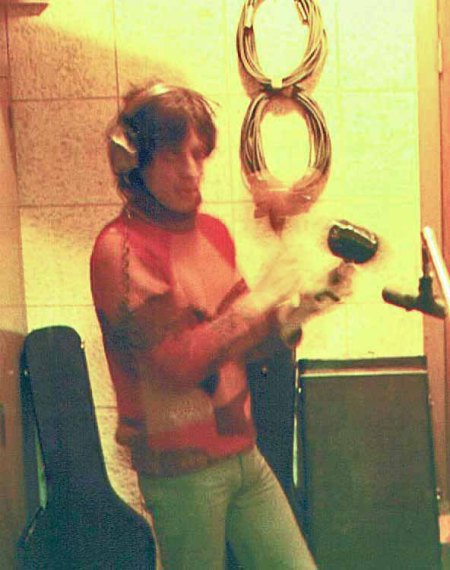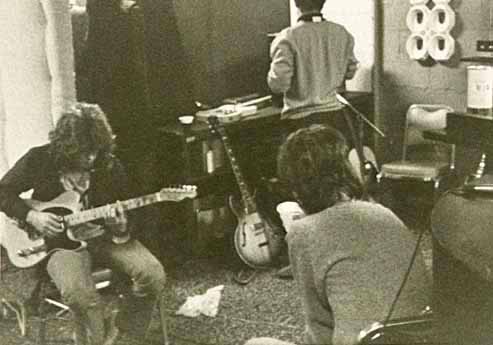December of 1969 was a fitting end to a turbulent decade in American history: the Black Panthers were under attack in L.A.; The Jackson 5 had their first appearance on the Ed Sullivan Show; John Lennon was offered the lead role in Jesus Christ Superstar; Vince Lombardi coached his last Green Bay Packers football game; Arlo Guthrie released Alice’s Restaurant; and on Sunday, December 6th, more then 300,000 overly indulgent fans attended the Rolling Stones free concert at the Altamont Speedway. Four people died that tragic day, and many more were injured. Some claimed it was the death knell for the “Age of Aquarius”–a knockout blow to the myth of rock and roll innocence.
But for the Rolling Stones, the days leading up to Altamont had been anything but terminal; instead, they were fueled by a growing creative surge that would peak almost seventeen months later with the release of Sticky Fingers, their iconic album that would leave its indelible mark on rock music for decades to come. For three days, from December 2nd-4th, 1969, they labored inside that building with the distinctive stone facade at 3614 Jackson Highway in Sheffield, Alabama, home of the Muscle Shoals Sound Studio and their house band known as “The Swampers.”
The three classic songs that the Stones recorded there, Brown Sugar, Wild Horses, and You Gotta Move, created the solid foundation upon which that album was built–a musical testament that further cemented their hard earned reputation as one of the most dynamic band of brothers in the history rock and roll. Some critics called it their masterpiece.
In the recently released documentary “Muscle Shoals,” Keith Richards reflects on that historic session in December of 1969 with his typical wry humor and wit, and a bit of nostalgia. After some humorous banter about the quantity of drugs and alcohol that were consumed during those three heady days, he talks about what might have been:
I thought it was one
of the easiest and rockingest sessions that we’d ever done. I don’t
think we’ve been quite so prolific…ever (laughs). I mean we cut
three or four tracks in two days, and that for the Stones is going on
something! We left on a high with “Brown Sugar.” We knew we had one of
the best things we’d ever done.
I always wanted to go
back there and cut more, you know. Then shit happened, so we ended up
in France in a basement there doing Exile on Main Street. Otherwise,
Exile would have probably been cut in Muscle Shoals–but politically it
wasn’t possible—I wasn’t allowed in the country at the time. So, that
was that (laughs).
Those sessions were
as vital to me as any I’ve ever done. I mean, all the other
stuff—Beggars Banquet and all the other stuff we did: “Gimme Shelter,”
“Street Fighting Man,” “Jumpin’ Jack Flash,” you know? But I’ve always
wondered…that if we had cut them at Muscle Shoals, if they might not
have been a little bit…funkier?
–Keith Richards
Six of the photographs found below are on loan from the private
collection of Jimmy Johnson, co-founder of the Muscle Shoals Sound
Studio and the versatile guitarist for the Swampers. He was also the
engineer behind the console during that legendary session, and the
person credited with capturing that choice piece of rock and roll
history.These photos offer a private, almost intimate glimpse of those few days: Ahmet Ertegun, sitting silently behind the console, patiently waiting to sign the group to Atlantic Records; Mick Jagger, nailing the percussion on Brown Sugar; Keith Richards, watching Mick Taylor work out a part on his Telecaster; drummer Charlie Watts, taking a quiet break in the action–all of these exclusive photographs are presented here for the very first time.
——————————
The Rolling Stones at Muscle Shoals Sound Studio
–December 2nd to 4th, 1969–

(L-R)
Bill Wyman, Jimmy Johnson, Keith Richards, Charlie Watts, unknown crew
member, Ahmet Ertegun (president of Atlantic Records), and Terry
Woodford at the Muscle Shoals Sound Studio in Sheffield, Alabama.
——————————
——————————
——————————
——————————
——————————
——————————






